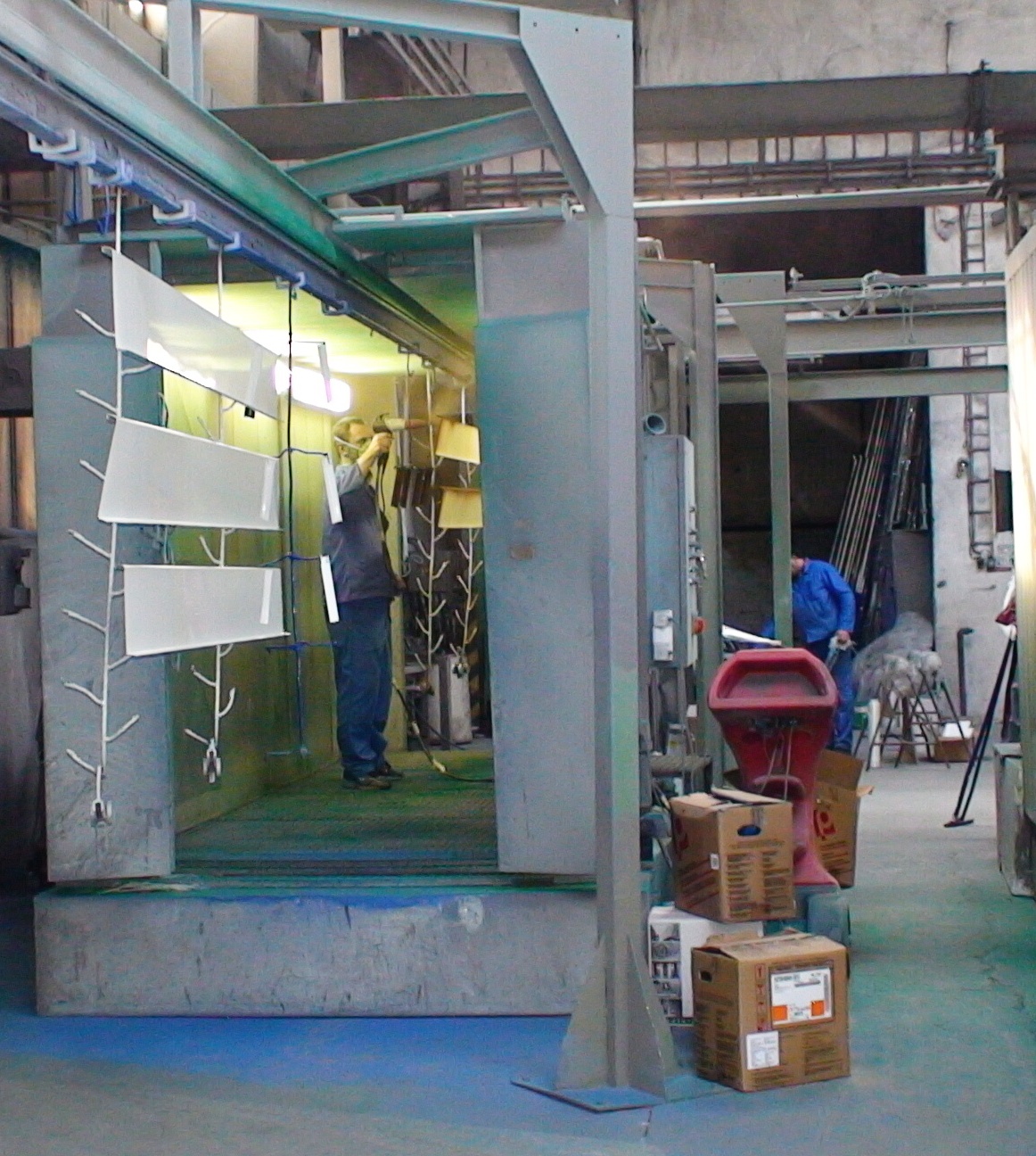surface conditioning
One of the foremost prerequisities for quality of a product is its surface conditioning, that completes design and improves functional properties, secures material protection from outer factors, promotes technical solution and thus improves sales at both domestic and foreign market.
Powder paint substances are one of the most progressive methods of materials anticorosive protection. Increased interest in powder paints can be credited to their excellent physical and chemical properties, that at least line up with conventional paint systems containing solvents, so called wet paints, while the highest criteria for anticorosive resistance and aesthetical properties of the final surface are met.
1. Main ecological benefits
- No solvents
- 100 % solid fraction
- Pigments without dangerous heavy metals (lead, cadmium)
- Minimal waste of material(practically no garbage technology)
- System of recycling
- Simple destruction of powder waste
2. Main economical benefits
Besides obvious technical, physical and ecological benefits, powder paints are interesting also from economical point of view. Some of the significant benefits of powder coating are:
- One-layer paint
- Energy savings
- Increase of the metal material life span
Powder paints are made in form of very soft powder with average grain size of 40-50 mm with particle distribution up to 100mm. After application on preprocessed metal surface it is necessary to burn the applied material in oven at temperatures of 180-200°C for about 10-15 min, while paint systems with burn temperature of 120°C exist.
Composition:
Most of the powder paints are mix of resin (polyester, epoxide), hardening agent, leakage regulating agent, catalyzer, pigments, fills and others, while resin forms the basis in which all other substances are dispersed. Toxicological studies of these paints showed that most of the powder paints are considered to be inert material.
Besides the basic system of resin with hardening agent (binder / hardener), the final powder paint is formed with:
- Pigments - contribute to coloring and covering properties of powder paints
- Fills - decrease the price of basis materials and make the properties of applications
- Additives - promote the desired properties (film leakage, texture and structure creation)
3. Basic type of powder paints and their properties
EPOXIDE
Suitable especially for interior use.
POLYESTER
Presently, there are enough variations of polyester resins usable for different application. Hardened polyester obtains very dense chemical netting, which causes very good mechanical and chemical properties of polyester powder coats.
HYBRID (EPOXIDE / POLYESTER )
For purpose of utilizing the best properties fo polyesters, as well as epoxides, in the mid 70s, they were mixed together to form a hybrid material. Polymer chain formed is less stable than the weakest cell, though. Therefore, in this case UV resistance was not significantly increased. However, new satisfying properties have been declared, such as:
- weaker yellow tones when overburned
- improvement of electrostatic application properties
- a little higher resistance to chalking effect
Use:
- Metal furniture
- Metal binding fixtures
- Outer constructions
- Home equipment
- Heating elements
- Automobile components
- Machinery devices and tools
- Protection from corrosion
- Electric isolation
- Other general industrial utilization

